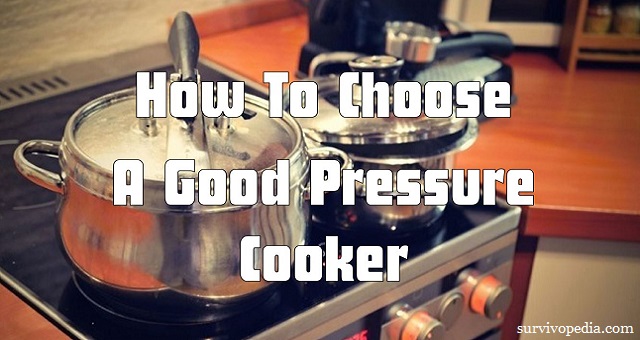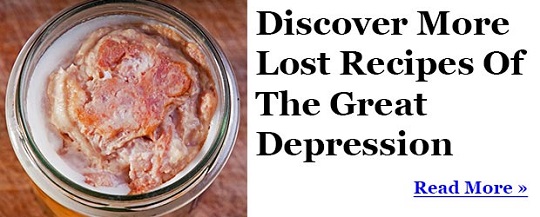Ahh … the much revered and often feared pressure cooker.
Your mom makes delicious pot roasts in them, and you can cook food in a fraction of the time that it takes to cook it on the stove or in the oven. The problem is that you’ve heard horror stories about pressure cookers that blow up and spew hot food and liquid all over the place.
That’s a reasonable fear. I cook with a pressure cooker at least once every couple of weeks, but I have had an explosive incident when I was young and learning to use it. It was a completely user error.
I was using an old pressure cooker with the top jiggler and I didn’t put it on correctly, nor did I properly seal the lid. The jiggler blew clear through the dry wall in my ceiling, and my roast beef blew all over my kitchen.
They say there’s no better teacher than experience. Fortunately for me, I had my mother to tell me what I did wrong, after she made sure I was OK, then laughed for ten minutes when she saw my kitchen.
Don’t let this story scare you. It’s a rare thing, and if you’re buying a modern pressure cooker, much of the mysticism and dangerous flying objects have been removed so that anybody can use one without needing to patch their ceiling.
For that matter, if you’re buying an old one, you’re gonna be just fine after you read this article.
Can I Can Foods in a Regular Pressure Cooker?
The short answer? No. don’t do it. And this is coming from somebody who laughs in the face of most government-issued warnings.
And here’s why you shouldn’t use a pressure cooker to pressure can foods. Pressure cookers don’t maintain a steady heat and pressure. Both rise and fall, and you don’t have control of heat other than high, medium, or low.
It’s imperative that your pressure-canned food maintain a minimum temperature for a set amount of time in order to kill pathogens that won’t kill you in 2 months or 2 years when you get around to opening that jar. Buy pressure canners specifically meant for canning. You can find these at thrift stores and yard sales, too.
Discover the ingenious recipes that helped our ancestors stay alive!
Types of Pressure Cookers
There are two types of pressure cookers: rangetop and electric. Electric pressure cookers may be better for you if you’re especially timid because they work very much like a crock pot does; well, at least they’re more goof-proof. On the other hand, they are useless during blackout unless you have a good and steady energy source.
A stovetop pressure cooker can be a bit trickier, especially if you’re using an older one. One is no better or worse than the other and the end result is the same as long as you use them properly. Rangetops do typically cook faster, though.
Video first seen on thenewsurvivalist.
Tips to Buying a Good Used Pressure Cooker
Like most of my good kitchenware, I inherited one of my pressure cookers and picked the other two (yes, two) up at yard sales. There are five traits to consider when you’re buying a used pressure cooker.
- First, make sure that the seal is in good condition. You’ll find this in place in a ring around the inside of the lid. Pull it out and inspect it. If it crumbles in your hand or shows signs of dry rot, skip it.
- Next, make sure that the pot and the lid are in excellent condition. This isn’t one of those products where you can overlook a few dings. You want to make sure that the sides all feel even and that the lid seals tightly onto the pot. Most have a locking mechanism that falls into place when the lid is properly locked, so check that if there is one. Lock it down to make sure that it works. The handles should line up and stop. If they just slide right past each other, skip it.
- Don’t forget to look at the jiggler. It’s technically called a regulator and most that you find will have at least five- and ten-pound capabilities. Make sure it’s there because the pressure cooker won’t do you a lick of good without the regulator.
- Make sure that the rack is in it. Pressure cookers have a rack that sets in the bottom of the pot. This keeps the food suspended above the bottom so that pressure can circulate all around it, and it keeps the food from burning to the bottom of the pan.
- Finally, look for a good brand name. Even if you buy an older one, if it’s by a well-known brand name, chances are good that you’re going to get a good product and will likely be able to buy a replacement seal if yours goes bad.
After all, a pressure cooker is something that you’ll be able to pass to your kids. One of mine is over 50 years old and is still as reliable as an April shower. Or snowstorm, depending on where you live.
Two excellent older brands that are still producing pressure cookers today are Presto and WearEver. Newer brands include Imusa, Fissler, WMF, Tramontina, and Fagor. Two of mine are Presto and the other is WearEver. I don’t have any experience with new ones.
Tips for Buying a New Pressure Cooker
First of all, you’re going to have to decide whether you want to buy an electric pressure cooker or a rangetop pressure cooker. Both have advantages and disadvantages. Rangetops typically cook faster and the pot can be used by itself as a stockpot. You’ll have to regulate the pressure via the regulator and the heat settings on your stove.
Electric models automatically pressurize and depressurize according to how you set it and most of them can be used as slow cookers and steamers. They take longer to cook, though.
Which type of pressure cooker you need is up to you. They come in different sizes and some offer only a couple of pressure settings while others offer 3 of 4. The electric ones can get pretty fancy and have many settings. It’s all a matter of what you want and need. Good Housekeeping did a review on top pressure cookers that may help.
In general, you’re going to need to pick a size based upon what you plan to cook in it, and you’ll have to decide between electric and rangetop. Look for a pressure cooker that has a good seal, and I recommend one with a locking mechanism for somebody just learning to use one. That takes away the chance of not aligning the lid and pot properly.
What’s up with the Different Pounds on the Regulator?
The pressure regulator is what determines the pressure inside of the pressure cooker. Typical pressure settings are 5, 10, and 15 though many of the electric models have ranges from just a couple of pounds up to 15 pounds. That number is how many pounds of pressure build up inside the cooker.
Different foods require different pounds of pressure. For instance, delicate vegetables like spinach may only need 5 pounds, while roasts require 10 or 15. In many new cookers, this will likely be expressed as low, medium, and high.
Now that you know how to choose your pressure cooker, you can easily go ahead with the best recipes for your family.
Find how our forefathers handled their survival food, and steal their secrets for your own survival!
This article has been written by Theresa Crouse for Survivopedia.
from Survivopedia
Don't forget to visit the store and pick up some gear at The COR Outfitters. How prepared are you for emergencies?
#SurvivalFirestarter #SurvivalBugOutBackpack #PrepperSurvivalPack #SHTFGear #SHTFBag



No comments:
Post a Comment